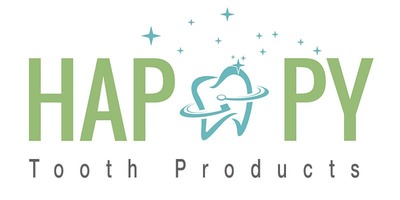These Ingredients are NEVER in Happy Products
Just as important as what’s IN our HAPPY Tooth Products is what’s NOT in our products.
1. Fluoride
Fluoride is a very controversial product and subject. Some say it is toxic. Some say it is a natural product because it is found in nature: soil for example. I will not debate it here, but if you are someone who wants an oral care product with NO fluoride, HAPPY Tooth Products are for you.
By the way, there is 0.15% fluoride in toothpaste, or 0.0015 parts per 1 part of toothpaste—that is 1500 parts out of a total of 1,000,000 parts, or 1.5 parts in 1000. One must assume that manufacturers can uniformly disperse 1.5 parts in 1000 through out the product to make toothpaste effective. How much fluoride I wonder is actually in each dab of toothpaste on your brush and then remaining in your mouth? Despite this very low volume, warning statements are required on fluoride toothpastes—“keep out of the reach of children under 6.” So what should children brush with? Fluoride is toxic, a poison to the body, in larger quantities than what is in toothpaste.
2. Sodium Lauryl Sulfate (SLS)
Sodium lauryl sulfate is another chemical known as a detergent surfactant. It is used in toothpaste for mouth feel and creating foam. It is almost as controversial as fluoride in terms of its potential for causing cancer, causing allergic reactions (cold sores), and being harmful. It is in the hair shampoo I use!
One major toothpaste manufacturer now claims that removal of SLS is important. They say “Fluoride binds to SLS and other active ingredients, which minimizes the amount of fluoride that is available to bind to your teeth” (Pronamel website). If this is true, why are major toothpaste manufacturers continuing to use SLS together with fluoride in their products?
3. Glycerin
Glycerin is usually the second or third ingredient in toothpaste. Glycerin is a member of the soap family and used to improve mouth feel. There is also controversy regarding it leaving a film on tooth surfaces.
4. Potassium Nitrate
Potassium nitrate is a chemical used in toothpaste marketed to address tooth sensitivity. It does not work by curing the cause, which is usually exposed dentin at the gum line. It interacts with the nerve endings in your dentin so the sensitivity signals are blocked to the brain; so sensitivity is not felt, but the cause is still happening at the dentin/gum line area.
5. Other Paste Chemicals
All of these chemicals in commercial toothpaste serve no oral care purpose; only to give toothpaste the right mouth feel, consistency (viscosity), storage life, color and taste. These are: PEG-12, tetrasodium pyrophosphate, propylene glycol, sodium saccharin, artificial sugars, sodium benzoate, sodium hydroxide, titanium dioxide, methylcellulose, among others.
6. Cocamidopropyl Betaine
Cocamidopropyl betaine (CAPB) is a chemical found in many personal care products, including toothpaste, shampoo, and body wash. It’s function is to make products produce more foam. CAPB has been found to cause allergic reactions in some people, including irritated skin and rashes (LiveStrong.com)
7. Other Mouth Rinse chemicals
ALCOHOL, Cetylpyridinium Chloride, Chlorhexidine, sorbital, sucralose, poloxamer 407, polysorbate 20, and potassium sorbate are all ingredients that have questionable roles in an oral care product or can cause potential mouth irritations.
Artificial Dyes (like FD&C Red No.40, Blue No.1, Green No.3) are used to make the red, green, or blue colored mouth washes.
